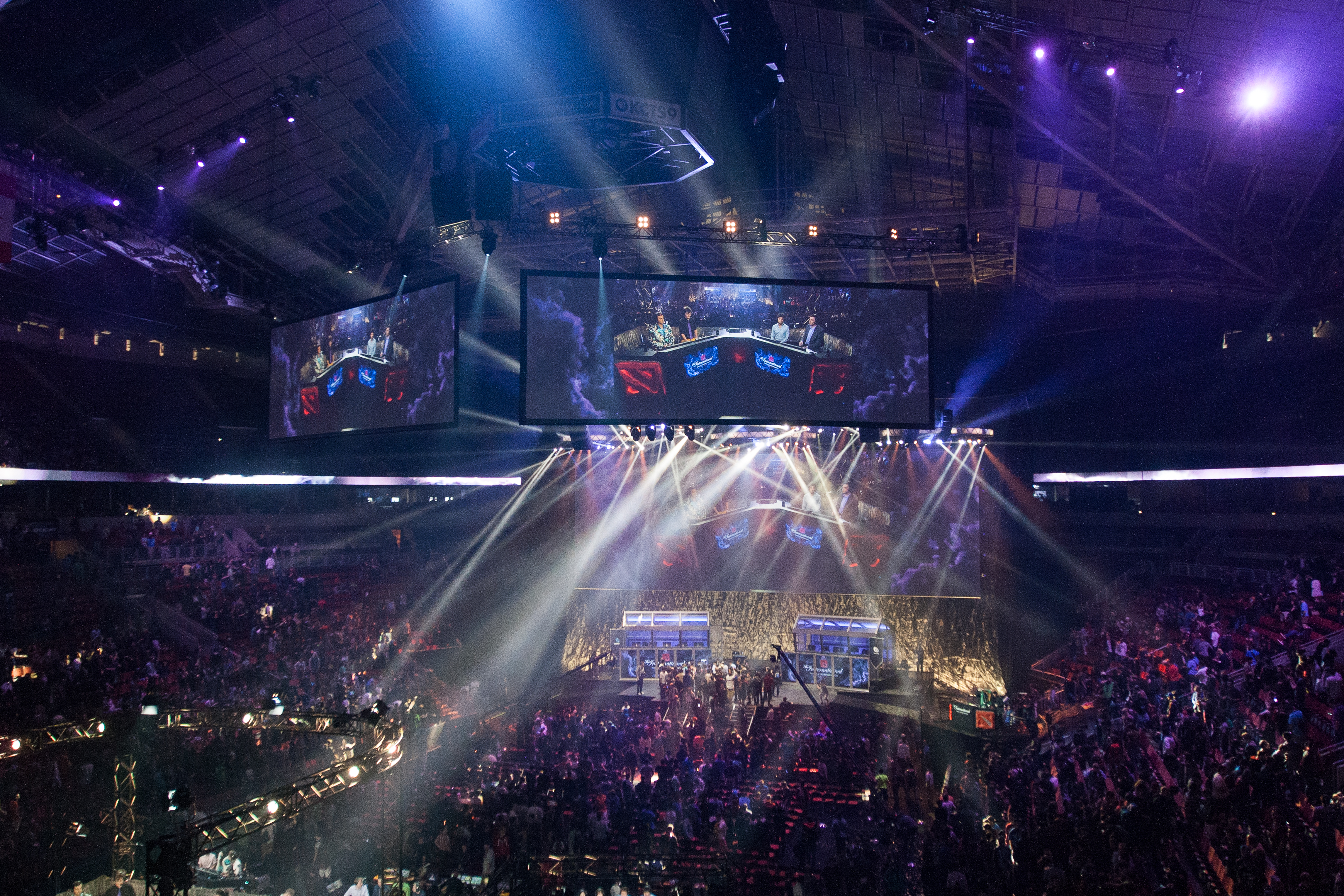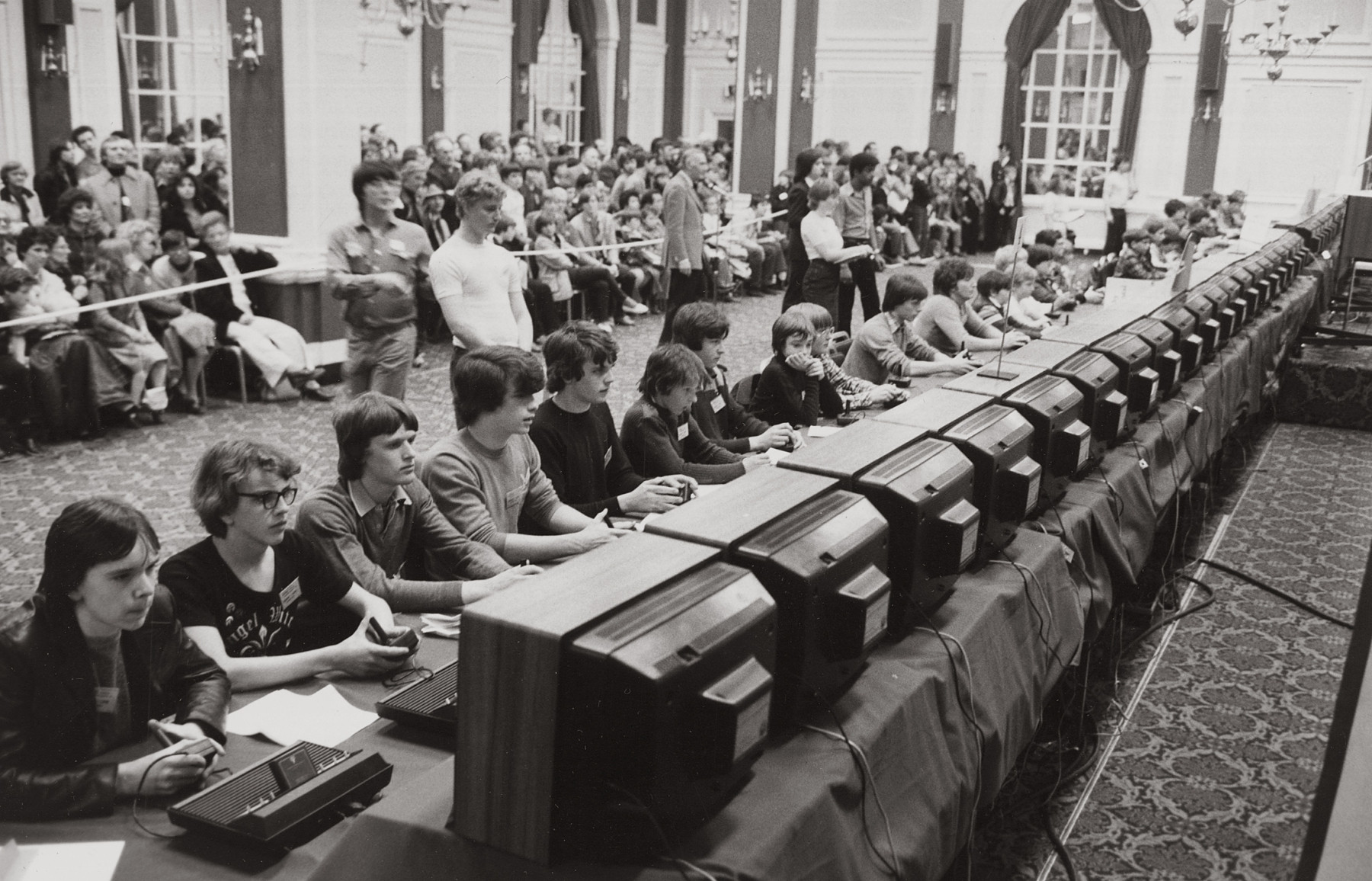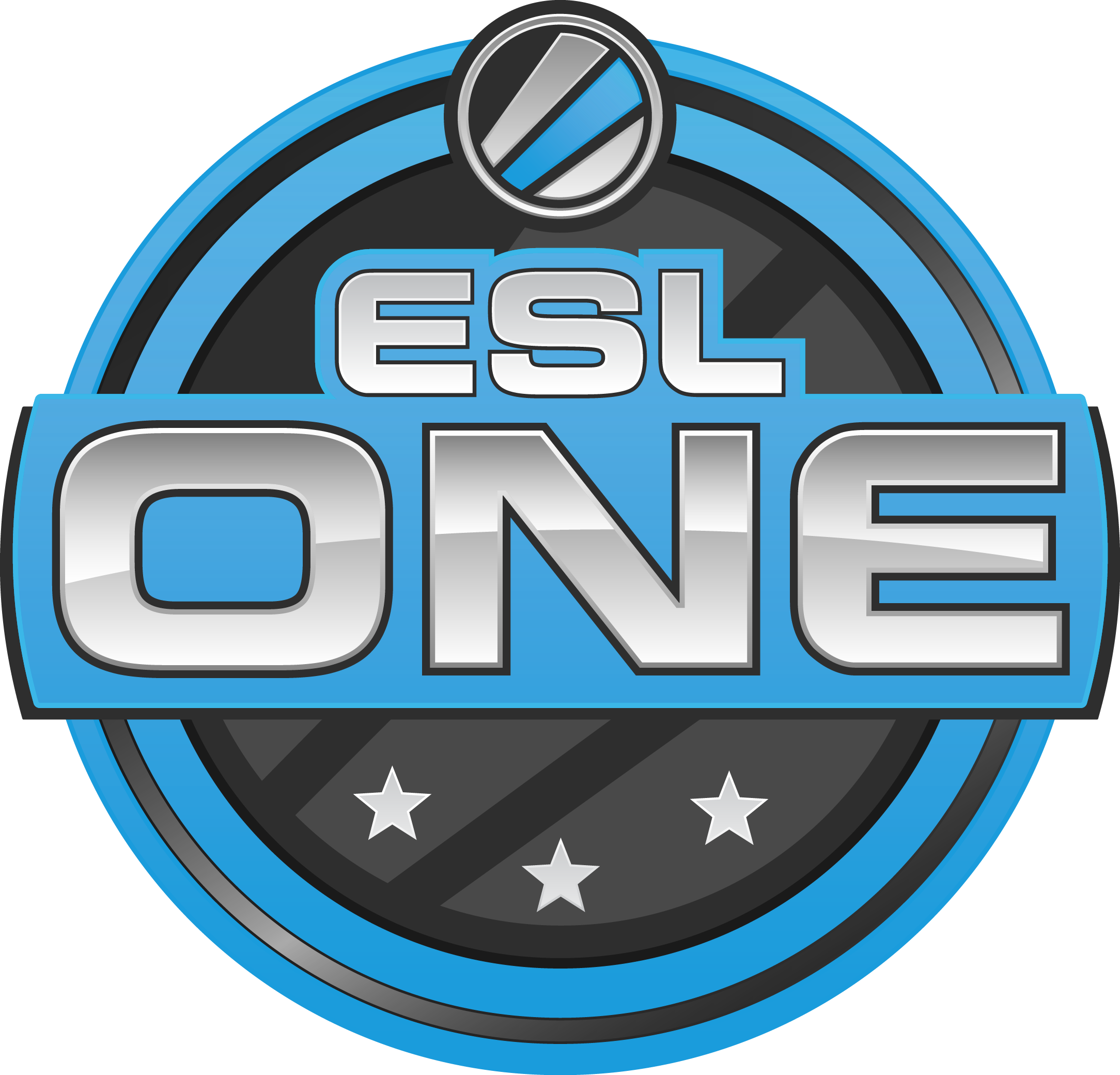
eSports is experiencing exponential growth and has quickly become what every traditional sports league wants to be: global, innovative and bursting full of young, enthusiastic fans. We don’t have to tell you that eSports is a big deal right now, with mainstream publications frequently writing about the phenomenal number of fans and the staggering amounts of prize money that professionals are scooping up. But how has eSports grown into what it is today and where did it all start?
Those smart students at Stanford were the first to kick off competitive gaming, with the first video game competition – that we’re aware of – taking place on campus in October 1972. The students took part in the ‘Intergalactic Spacewar Olympics’. The prize was a humble subscription to the magazine, Rolling Stone.
 Space Invaders Championship (1981) © Atari
Space Invaders Championship (1981) © Atari
Atari followed the students lead and held the first large scale video game competition in 1980. The Space Invaders Championship, held in the US, attracted 10,000 entrants and marked the beginning of competitive gaming being considered a mainstream hobby.
Between 1982 and 1984 a TV show called Starcade aired a total of 133 times on American TV, on it contestants played arcade games with the intention of beating their opponent’s scores. This just goes to show that whilst the way we consume media today is hugely removed from sitting in ‘front of the box’ at a set time, spectating and kibitizing have around for a long time.
Welcome the 90s. Welcome better connectivity.
Let’s focus on South Korea – where eSports are without a doubt mainstream – first. In 1995 the Korean government invested $1.5 billion introducing widespread broadband across the country. This transformation was coupled with the availability of cheap PCs and masses of frugal youths living with the pains of the Asian financial crisis. With little money to burn teenagers stayed in and played computer games. With the launch of online games in the 90s this didn’t have to be a nerdy, anti-social activity.
In 1993, Netrek, was hailed as the “first online sports game” by Wired Magazine. It had all the characteristics of the online games of the 90s; it was very fast, graphical and played by teams. It marked the beginning of online multi-player games we know and love today, that’s for sure.
Throughout the 90s large eSports tournaments also started to take place in the US with the likes of Nintendo running world championships in 1990 and 94. Blockbuster Video also ran its own World Game Championship. No commentary of the 90s competitive gaming scene would be complete without mentioning the infamous 1997 Red Annihilation tournament when Dennis ‘Thresh’ Fong won a 328 GTS Cabriolet in front of an audience of 2,000 spectators.

The 90s marked the launch of a lot of the leagues and competitive tournaments that exist today, such as the Cyberathlete Professional League (CPL) which hosted its first event called the FRAG in October 1997. Arguably CPL set the standard for rival professional leagues to follow. The Electronic Sports League (ESL), one of today’s leading eSports events brands, was also born in the 90s. In fact ESL claims to be the oldest eSports league.
The Noughties: Global Growth
Between 2000 and 2010 eSports started to gain momentum on a global scale. South Korea continued to be a real hotspot for growth and it was no coincidence that they led the televisation of eSports with 24 hour cable TV channels covering various competitions, including StarCraft and Warcraft 3. PC Bangs also played an important role in keeping eSports social by streaming online events for groups of fans to watch together.
Other countries aired eSports content through TV channels, however not to the extent that South Korea did. Germany had GIGA Television, UK had XLEGUE, France had Game One and ESPN in the US did cover some tournaments. It’s not unjust to say that viewing was sporadic pretty much everywhere apart from South Korea and very few of the channels lasted the distance.
TV channels aside, the tournaments of the noughties became global. In 2000 the first World Cyber Games were held in the South Korea and the first Electronic Sports World Cup took place in France. Both of these events included hundreds of participants from various corners of the world.
Major League Gaming (MLG) launched in 2002 and in the early days provided a platform for American and Canadian gamers to compete against each in scheduled tournaments. In 2006 it was the first tournament to be televised on American TV but this coverage didn’t make it past its inaugural year.
Step in online streaming
By the start of the current decade eSports had come a long way since the students in Stanford ran their ‘Intergalactic Spacewar Olympics’. However, it was still on the fringes of being mainstream entertainment and certainly didn’t have the fans and the coverage that it does today. So what was the catalyst for the significant growth in spectatorship? Twitch: the online streaming service that dominates competitive gaming broadcasting. Launched in 2011 as a spin off from Justin.tv it’s frequently touted as the YouTube of eSports. No wonder Amazon bought it for $970 million.
Twitch – with 100 million unique views – has grown as the eSports community has grown. However, it’s clear that Twitch, has in turn, grown the eSports community. By bringing eSports to anyone with an internet connection they’ve single handedly brought eSports to the masses; if there is one thing that has propelled eSports into mainstream entertainment, its Twitch.
Follow the Dafabet sponsored Fnatic team on Twitch.










